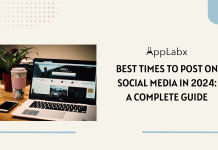Key Takeaways
- Customer-Centricity Drives Success: In the world of B2B SaaS marketing, understanding and addressing the needs of your target audience is paramount. Crafting customer-centric strategies ensures your marketing efforts resonate and convert effectively.
- Data-Driven Decisions Power Growth: Harnessing data and analytics is the key to making informed decisions, optimizing campaigns, and achieving sustainable growth. Data is your compass in the ever-evolving landscape of B2B SaaS marketing.
- Trust and Credibility Are Non-Negotiable: Building trust and credibility is not just a goal; it’s a foundation. Through customer testimonials, transparent communication, and strategic partnerships, you solidify your brand’s reputation and foster lasting relationships with customers.
In today’s digital age, the B2B SaaS (Business-to-Business Software as a Service) landscape has undergone a remarkable transformation.
The relentless pace of technological innovation has led to an explosion of SaaS solutions catering to a diverse array of industries and niches.
Yet, in this crowded and competitive marketplace, standing out and driving sustainable growth remains a colossal challenge.
This is where the art and science of B2B SaaS marketing come into play, and it’s what this ultimate guide is all about.
Imagine you’ve developed a cutting-edge SaaS product that promises to revolutionize how businesses operate.
Your software is feature-rich, intuitive, and solves critical pain points for your target audience.
It’s a game-changer.
But here’s the catch: Without effective marketing strategies, your groundbreaking SaaS solution may never reach the right audience, realize its full potential, or make the impact it deserves.
This is where our journey begins – a journey that will take you through the intricacies of B2B SaaS marketing, offering you a comprehensive roadmap to navigate the complex terrain of modern digital marketing.
Whether you’re a seasoned SaaS marketer looking to refine your strategies or a newcomer eager to make your mark, this guide has something valuable for everyone.
Before we delve into the strategies, let’s take a step back and appreciate how far B2B SaaS marketing has come.
In the early days of SaaS, marketing often revolved around cold calls, trade shows, and traditional outbound tactics.
However, as the internet reshaped how businesses interact with software, marketing paradigms had to adapt. Today, the landscape is characterized by inbound marketing, data-driven decision-making, and a relentless focus on customer-centricity.
In a world where every click, impression, and interaction can be measured, the digital realm has opened up unprecedented opportunities for SaaS companies to connect with their target audience.
Yet, this digital transformation has also made marketing more complex. With a multitude of channels, tools, and strategies at your disposal, finding the right path to success can feel like navigating a labyrinth.
This is where “B2B SaaS Marketing Strategies: The Ultimate Guide” steps in as your trusted compass.
Our aim is simple: to empower you with the knowledge, insights, and practical strategies needed to thrive in the fiercely competitive world of B2B SaaS.
Throughout this guide, we will dissect the anatomy of successful B2B SaaS marketing campaigns, demystify the jargon, and provide you with actionable steps to create a marketing strategy that not only attracts potential customers but also converts them into loyal advocates for your brand.
From understanding the unique challenges of B2B SaaS marketing and crafting compelling value propositions to mastering SEO optimization, content marketing, paid advertising, and data-driven decision-making, we’ve got it all covered.
We’ll help you build trust and credibility, navigate industry regulations, and scale your marketing efforts strategically.
But this guide isn’t just about theory.
Along the way, we’ll showcase real-life case studies and success stories from industry leaders who have cracked the code to B2B SaaS marketing excellence.
These stories will provide you with inspiration and practical insights that you can apply to your own marketing endeavours.
So, whether you’re a SaaS startup looking to make a splash or an established player aiming to sustain and expand your market share, this guide is your comprehensive resource.
It’s your roadmap to success in the dynamic and ever-evolving world of B2B SaaS marketing.
Get ready to embark on a transformative journey as we dive deep into the strategies, tactics, and best practices that can elevate your B2B SaaS marketing game.
The path to success starts here. Welcome to “B2B SaaS Marketing Strategies: The Ultimate Guide.”
About AppLabx
From developing a solid marketing plan to creating compelling content, optimizing for search engines, leveraging social media, and utilizing paid advertising, AppLabx offers a comprehensive suite of digital marketing services designed to drive growth and profitability for your business.
AppLabx is well known for helping companies and startups use digital marketing to drive web traffic to their websites and web apps.
At AppLabx, we understand that no two businesses are alike. That’s why we take a personalized approach to every project, working closely with our clients to understand their unique needs and goals, and developing customized strategies to help them achieve success.
If you need a digital consultation, then send in an inquiry here.
B2B SaaS Marketing Strategies: The Ultimate Guide
- Understanding B2B SaaS Marketing
- Setting the Foundation
- Creating a Strong Online Presence
- Nurturing Leads and Converting Customers
- Leveraging Content Marketing
- Paid Advertising and PPC Strategies
- Building Trust and Credibility
- Analytics and Data-Driven Marketing
- Analytics-and-Data-Driven-Marketing
- Handling Challenges and Roadblocks
1. Understanding B2B SaaS Marketing
In this section, we will delve into the fundamentals of B2B SaaS marketing, exploring what it is, the unique challenges it presents, and the undeniable benefits it offers.
Let’s embark on this journey of comprehension, where knowledge is key to success.
What is B2B SaaS Marketing?
B2B SaaS marketing, short for Business-to-Business Software as a Service marketing, refers to the strategic efforts and tactics employed to promote and sell software solutions to other businesses.
Unlike B2C (Business-to-Consumer) marketing, which targets individual consumers, B2B SaaS marketing is focused on enterprises, organizations, and professional clients.
Example: Consider Salesforce, a leading B2B SaaS company. Salesforce provides cloud-based customer relationship management (CRM) software to businesses worldwide. Their marketing efforts revolve around reaching out to enterprises looking to streamline their customer management processes.
Unique Challenges in B2B SaaS Marketing
Marketing in the B2B SaaS sector presents distinct challenges that set it apart from other industries. Understanding these challenges is crucial to devising effective strategies.
Longer Sales Cycles
B2B SaaS products often involve complex decision-making processes within organizations.
As a result, the sales cycle tends to be longer than in B2C markets.
Targeting Multiple Stakeholders
In B2B SaaS, you’re not just dealing with one decision-maker; multiple stakeholders, including IT teams, finance departments, and end-users, may be involved in the purchasing process.
Crafting messaging that appeals to each stakeholder group is a significant challenge.
Education-Driven Marketing
B2B SaaS products often require a degree of education for potential customers to understand their value fully.
Effective content marketing and educational resources are vital to bridge this knowledge gap.
Example: HubSpot, a B2B SaaS company specializing in inbound marketing software, provides extensive educational content in the form of blogs, webinars, and certification courses.
This strategy has helped them attract and nurture leads effectively.
Benefits of Effective B2B SaaS Marketing
While B2B SaaS marketing presents its unique set of challenges, it also offers compelling advantages when executed well.
Recurring Revenue Model
One of the most appealing aspects of B2B SaaS is the recurring revenue model.
Instead of one-time purchases, customers typically subscribe to SaaS products on a monthly or yearly basis.
This predictable revenue stream can lead to substantial long-term profits.
Scalability
SaaS products can be scaled easily to accommodate the needs of various businesses.
This scalability is a major selling point, and effective marketing can showcase how SaaS solutions can grow with a company.
Example: Slack, a collaboration SaaS platform, demonstrates scalability by offering different pricing tiers based on the size and requirements of the organization, making it suitable for both startups and large enterprises.
Data-Driven Decision-Making
Digital marketing in the B2B SaaS space allows for robust data collection and analysis.
Marketers can gain deep insights into customer behaviour, which, when used effectively, can refine marketing strategies and drive better results.
Understanding B2B SaaS marketing is the foundation upon which successful campaigns are built.
With an awareness of its nuances, challenges, and benefits, you’re better equipped to develop and execute strategies that resonate with your target audience and drive business growth.
2. Setting the Foundation
In the world of B2B SaaS marketing, a strong foundation is paramount.
Before you can launch successful campaigns, you need to lay the groundwork, which involves meticulous market research, defining your target audience, and crafting a compelling value proposition.
Let’s explore these critical elements in detail.
Market Research and Target Audience
Understanding your market and audience is the bedrock of effective B2B SaaS marketing.
Here’s how to get started:
- Identifying Ideal Customer Profiles (ICPs): Determine the characteristics of your ideal customers. This includes factors like industry, company size, job roles, pain points, and buying behaviour.
- Competitor Analysis: Study your competitors to identify gaps in the market and potential areas of differentiation. This analysis can inform your marketing strategies.
Crafting a Compelling Value Proposition
Your value proposition is the promise of value that your SaaS product delivers to customers.
It should be clear, and concise, and communicate why your product is the best choice.
- Unique Selling Proposition (USP): Identify what makes your SaaS product unique and better than the competition. Your USP should be a focal point of your marketing efforts.
- Customer-Centric Approach: Frame your value proposition around the specific problems your product solves for your target audience. Show how it can improve their operations, save time, or reduce costs.
Defining Clear Marketing Objectives
To measure the success of your B2B SaaS marketing efforts, you must establish clear objectives and key performance indicators (KPIs).
- SMART Goals: Ensure your marketing objectives are Specific, Measurable, Achievable, Relevant, and Time-bound (SMART). For instance, increasing website traffic by 20% in six months. According to a report, marketers who set specific goals are 429% more likely to report success than those who don’t.
- Lead Generation Goals: Define how many leads you aim to generate through your marketing efforts. Understand your conversion rates to estimate the volume of traffic needed to meet these goals.
By setting a solid foundation through thorough market research, a compelling value proposition, and well-defined marketing objectives, you’re equipping your B2B SaaS marketing strategy for success.
These early steps provide the direction and clarity needed to build and execute effective marketing campaigns.
3. Creating a Strong Online Presence
In the digital age, establishing a robust online presence is non-negotiable for B2B SaaS companies.
It’s the cornerstone of your marketing strategy, enabling you to reach, engage, and convert your target audience effectively.
In this section, we’ll explore the essential elements of building a strong online presence.
Building an SEO-Optimized Website
Your website is often the first point of contact between your brand and potential customers.
Optimizing it for search engines and user experience is crucial.
- Keyword Research: Identify relevant keywords that your target audience is searching for. Use tools like Google Keyword Planner to find high-traffic, low-competition keywords. According to a report, websites with blogs have 434% more indexed pages, which results in more opportunities for search engines to crawl and index content.
- On-Page SEO Strategies: Optimize your website’s content, meta tags, headings, and images for search engines. Create high-quality, informative content around your target keywords.
- Example: Moz, an SEO software company, provides comprehensive resources on their website, including blog posts, guides, and tools, all geared toward educating their target audience about SEO.
Also, read our top guide on the top 10 WordPress themes that have a greater SEO boost feature in them, “Top 10 Best SEO WordPress Themes in 2023 (To Boost Your Ranking)“.
Content Marketing
Content is the fuel that powers your online presence. It educates, engages, and informs your audience while positioning your brand as an industry leader.
- Blogging and Thought Leadership: Regularly publish blog posts that address pain points, challenges, and industry trends relevant to your audience.
- Whitepapers and eBooks: Create in-depth resources that offer valuable insights. Require users to provide their contact information to access these resources, thereby generating leads.
Social Media Engagement
Social media platforms provide opportunities to connect with your audience on a more personal level and amplify your content.
- Platform Selection: Identify the social media platforms where your audience is most active. For B2B SaaS, platforms like LinkedIn, Twitter, and even YouTube can be effective. LinkedIn is the most widely used social media platform for B2B marketing, with 94% of B2B marketers using it as a content distribution channel.
- Consistent Posting: Maintain an active presence by posting regularly. Share a mix of content, including blog posts, infographics, videos, and industry news.
- Engage and Interact: Respond to comments and messages promptly. Engage with your audience by asking questions, conducting polls, and fostering discussions.
Email Marketing
Email remains a powerful tool for nurturing leads and maintaining customer relationships.
- Content-Rich Newsletters: Send newsletters that contain valuable content, product updates, and industry insights. Use segmentation to target specific subscriber groups. According to a study, email marketing has an average ROI of $42 for every $1 spent.
- Marketing Automation: Implement marketing automation to send personalized, timely emails based on user behaviour and interactions with your website or app.
- Example: Mailchimp offers marketing automation features that allow B2B SaaS companies to nurture leads and send tailored email campaigns automatically.
A strong online presence is a dynamic, ongoing effort that requires constant optimization and adaptation.
By focusing on SEO, content marketing, social media engagement, and email marketing, you can build a digital footprint that attracts, engages, and retains your target audience.
4. Nurturing Leads and Converting Customers
Nurturing leads and converting them into paying customers is the lifeblood of any B2B SaaS company.
In this section, we’ll explore effective strategies and tactics to guide leads through the sales funnel and close the deal.
Implementing a Lead Generation Strategy
Generating a steady stream of qualified leads is the first step towards conversion.
- Content Offers and Landing Pages: Create valuable content assets such as eBooks, whitepapers, and webinars. Require users to provide their contact information through optimized landing pages to access these resources. According to a report, companies that publish 16+ blog posts per month get 3.5 times more traffic than those that publish 0-4 monthly posts.
- Webinars and Events: Host webinars and virtual events that showcase your expertise and provide solutions to common industry challenges. Encourage registrations to capture leads.
- Example: Zoom, a video conferencing SaaS, frequently hosts webinars that not only showcase their product but also provide valuable insights into remote work and communication.
Effective Lead Nurturing
Once leads are in your pipeline, nurturing them with relevant content and engagement is critical.
- Email Sequences: Develop automated email sequences that deliver valuable content over time. Tailor these sequences based on user behaviour and interests.
- Marketing Automation: Implement marketing automation tools to track lead interactions with your website and content. Use this data to trigger personalized messages and alerts to your sales team.
- Scoring and Segmentation: Assign lead scores based on engagement levels. Segment leads into categories like “hot leads,” “warm leads,” and “cold leads” to prioritize follow-up.
Closing Sales
Closing deals in the B2B SaaS space involves a mix of sales and marketing efforts.
- Sales Funnel Optimization: Continuously analyze and refine your sales funnel. Identify bottlenecks and drop-off points to improve the conversion rate at each stage.
- Sales Enablement Strategies: Equip your sales team with the tools and content they need to convert leads into customers effectively. Provide training and resources that align with the buyer’s journey.
- Use of CRM Software: Implement Customer Relationship Management (CRM) software to manage leads and track interactions. CRM systems help streamline the sales process and improve efficiency. CRM software can increase revenue by 41% per salesperson, according to a study.
Effective lead nurturing and conversion strategies are essential for maximizing the ROI of your marketing efforts.
By providing valuable content, automating processes, and aligning sales and marketing teams, you can nurture leads into loyal customers in the competitive B2B SaaS landscape.
5. Leveraging Content Marketing
Content marketing is a cornerstone of B2B SaaS success.
It’s the means by which you educate, engage, and ultimately convert your target audience.
In this section, we’ll explore the key aspects of leveraging content marketing effectively.
Blogging for Thought Leadership
Blogs are a powerful way to establish thought leadership in your industry and draw organic traffic to your website.
- Regular and High-Quality Blog Posts: Consistently publish informative and well-researched blog posts that address industry trends, challenges, and solutions. As mentioned above, companies that publish 16 or more blog posts per month receive 3.5 times more traffic than those that publish 0-4 monthly posts.
- Long-Form Content: Incorporate long-form content such as comprehensive guides and in-depth articles. These pieces tend to perform well in search results and provide substantial value to readers.
Creating High-Value, Educational Content
Content should aim to educate your audience and address their pain points.
- Educational Resources: Develop resources such as webinars, video tutorials, and online courses that teach your audience how to solve specific problems using your SaaS product.
- Interactive Content: Consider interactive content like quizzes, calculators, and assessment tools to engage your audience and provide personalized value.
- Example: HubSpot offers an email signature generator tool that not only engages users but also collects leads’ email addresses.
Using Video Marketing
Video content has become a pivotal component of content marketing.
- Explainer Videos: Create concise and engaging explainer videos that showcase your SaaS product’s features and benefits. These videos can be placed on your website and shared on social media. According to a report, online videos will make up more than 82% of all consumer internet traffic, 15 times higher than in 2017.
- Customer Testimonials: Share video testimonials from satisfied customers. Hearing success stories from peers can significantly influence potential buyers.
- Example: Slack’s YouTube channel features customer testimonials that highlight the positive impact of their collaboration software on businesses.
Podcasting and Webinars
Podcasting and webinars provide platforms for in-depth discussions and knowledge-sharing.
- Podcasts: Launch a podcast series where you invite industry experts and discuss relevant topics. This can help you reach a broader audience and establish your brand as a thought leader.
- Webinars: Host webinars that delve into specific subjects related to your industry or product. These live events allow for direct audience interaction and engagement.
- Example: Zoom hosts webinars to educate users on their video conferencing and communication solutions, fostering both brand trust and product adoption.
Guest Posting and Influencer Collaborations
Expanding your content reach through guest posting and influencer collaborations can amplify your message.
- Guest Posting: Contribute guest posts to reputable industry blogs and publications. This not only builds backlinks to your website but also establishes your authority.
- Influencer Collaborations: Partner with industry influencers who can promote your content to their followers. Influencers can lend credibility and broaden your audience reach.
Leveraging content marketing effectively requires a well-rounded strategy that incorporates various content formats and distribution channels.
By consistently producing high-value content, you can attract, engage, and retain your target audience while positioning your B2B SaaS brand as an industry leader.
6. Paid Advertising and PPC Strategies
Paid advertising, including Pay-Per-Click (PPC) campaigns, is a vital component of a comprehensive B2B SaaS marketing strategy.
This section explores the key elements and strategies for effectively leveraging paid advertising in the B2B SaaS space.
Google Ads for B2B SaaS
Google Ads is a powerful platform for reaching potential B2B SaaS customers actively searching for solutions.
- Keyword Selection: Conduct thorough keyword research to identify high-intent keywords relevant to your SaaS product. Focus on long-tail keywords that indicate strong purchase intent. Google Ads can increase brand awareness by up to 80%, according to a study.
- Ad Extensions: Utilize ad extensions to provide additional information to users. Extensions like site links, callouts, and structured snippets can enhance your ad’s visibility and relevance.
LinkedIn Advertising
LinkedIn is a B2B-centric platform, making it an ideal choice for targeted advertising.
- Audience Segmentation: Leverage LinkedIn’s robust targeting options to reach decision-makers and professionals in specific industries, job roles, and company sizes. LinkedIn is responsible for 80% of B2B leads generated through social media.
- Sponsored Content: Promote your thought leadership content, such as eBooks or webinars, directly in users’ LinkedIn feeds. This approach can drive engagement and conversions.
Retargeting and Remarketing
Retargeting and remarketing strategies help re-engage users who have previously interacted with your website or product.
- Dynamic Remarketing: Create dynamic remarketing campaigns that display personalized ads to users based on the specific pages or products they viewed on your website. Statistic: According to WordStream, the average click-through rate (CTR) for retargeted ads is 10 times higher than that of regular display ads.
- Abandoned Cart Remarketing: Implement remarketing campaigns targeted at users who abandoned the shopping cart or trial sign-up process. Offer incentives or reminders to encourage them to complete the action.
Budget Allocation and ROI Measurement
Effectively managing your advertising budget and measuring ROI are crucial to PPC success.
- Budget Allocation: Allocate your budget based on the channels and campaigns that yield the best results. Continuously monitor performance and adjust spending accordingly. The average ROI for Google Ads across all industries is $2 for every $1 spent.
- Conversion Tracking: Implement conversion tracking to measure the impact of your PPC campaigns accurately. Monitor conversion rates, cost per conversion, and customer acquisition costs.
Paid advertising and PPC strategies can deliver immediate results in terms of lead generation and brand visibility.
By choosing the right platforms, targeting effectively, and diligently monitoring performance, you can maximize the ROI of your paid advertising campaigns in the B2B SaaS sector.
7. Building Trust and Credibility
In the competitive landscape of B2B SaaS, trust and credibility are invaluable assets. Establishing trust not only enhances your brand’s reputation but also fosters customer loyalty.
This section explores strategies to build trust and credibility within the B2B SaaS sphere.
Customer Testimonials and Case Studies
Customer stories and testimonials provide social proof of your SaaS solution’s value.
- Customer Testimonials: Encourage satisfied customers to provide testimonials that highlight their positive experiences with your product or service. Include these testimonials on your website and marketing materials. According to a report, 92% of consumers read online reviews or testimonials.
Transparency in Communication
Transparent communication helps build trust by demonstrating honesty and authenticity.
- Pricing Transparency: Be upfront about your pricing model and any potential hidden costs. Transparency in pricing builds trust with potential customers.
- Product Updates and Roadmaps: Share your product roadmap and keep customers informed about upcoming features and improvements. This transparency shows a commitment to ongoing development.
Establishing Authority through Industry Partnerships
Collaborating with industry partners can enhance your credibility and reach.
- Partnership Endorsements: Form strategic partnerships with reputable organizations or influencers within your industry. When these entities endorse your product, it lends credibility to your brand. 89% of B2B marketers believe that partnerships and influencer marketing are effective strategies for improving brand credibility.
- Certifications and Accreditations: Seek relevant certifications or accreditations in your field. Display these certifications prominently on your website and marketing materials.
Building trust and credibility in the B2B SaaS sector requires a combination of customer testimonials, transparent communication, and strategic partnerships.
By consistently demonstrating the value of your SaaS solution and fostering trust with your audience, you can create a lasting and positive impression that sets your brand apart.
8. Analytics and Data-Driven Marketing
In the realm of B2B SaaS marketing, analytics and data-driven decision-making are not just advantageous – they’re indispensable. In this section, we’ll explore how leveraging data can empower your marketing strategies and drive better results.
Data Collection and Integration
Collecting and integrating data from various sources is the foundation of data-driven marketing.
- Website Analytics: Implement tools like Google Analytics to track website traffic, user behaviour, and conversions. Analyze this data to identify high-performing pages and areas that need improvement.
- CRM Integration: Integrate your Customer Relationship Management (CRM) system with marketing platforms to create a unified view of customer interactions and sales data.
Audience Segmentation and Personalization
Segmenting your audience based on data enables personalized marketing efforts.
- Behavioural Segmentation: Segment your audience based on their behaviour, such as engagement with your website or interaction with specific content.
- Demographic Segmentation: Use demographic data like job titles, industries, and company sizes to tailor your messaging to different buyer personas. According to a study, 80% of consumers are more likely to do business with a brand that offers personalized experiences.
A/B Testing and Experimentation
Experimentation and A/B testing help refine your marketing strategies based on data-driven insights.
- Email Campaigns: Test different subject lines, content formats, and sending times to determine what resonates most with your audience. According to a report, A/B testing can lead to a 49% increase in unique click rates.
- Website Optimization: Conduct A/B tests on landing pages, forms, and calls-to-action to optimize conversion rates and user experience. Example: Optimizely is a popular experimentation platform that enables companies to A/B test website elements to improve user engagement and conversions.
Predictive Analytics and Lead Scoring
Predictive analytics can help you identify high-potential leads and allocate resources effectively.
- Lead Scoring Models: Develop lead scoring models that assign values to leads based on their behaviour, demographics, and engagement. Focus your efforts on high-scoring leads. Companies that use lead scoring experience a 77% increase in lead generation ROI.
- Predictive Lead Scoring: Utilize predictive analytics tools that leverage machine learning to identify leads with the highest likelihood of conversion.
Attribution Modeling
Understanding how different marketing channels contribute to conversions is essential for optimizing your strategy.
- Multi-Touch Attribution: Implement multi-touch attribution models that track and attribute conversions to multiple touchpoints along the customer journey.
- Marketing Mix Modeling: Analyze the impact of various marketing channels on your overall ROI to allocate budget effectively.
Data-driven marketing isn’t just about collecting data; it’s about harnessing data to make informed decisions, optimize campaigns, and drive better results.
By leveraging analytics, segmentation, testing, predictive modelling, and attribution, you can gain a competitive edge in the B2B SaaS landscape and continuously improve your marketing strategies.
9. Scaling Up Your B2B SaaS Marketing
Scaling up your B2B SaaS marketing efforts is a pivotal phase in achieving sustainable growth.
In this section, we’ll explore strategies and best practices to expand your reach, capture more leads, and increase revenue.
Expanding Your Content Strategy
Content marketing remains a cornerstone of B2B SaaS marketing, and scaling it effectively can yield substantial results.
- Content Calendar: Develop a comprehensive content calendar that outlines a consistent publishing schedule. Plan ahead to ensure a steady flow of content. As stated above, companies that publish 16 or more blog posts per month generate 3.5 times more traffic than those that publish 0-4 monthly posts.
- Content Repurposing: Repurpose existing content into different formats like videos, infographics, and podcasts to reach a broader audience.
Scaling Paid Advertising
As you expand, paid advertising can help you reach new audiences and generate leads.
- Budget Allocation: Increase your ad spend strategically in channels that have proven ROI. Continuously monitor performance and adjust your budget allocation accordingly. The average ROI for Google Ads across all industries is $2 for every $1 spent, as stated above.
- Geographic Expansion: If your SaaS product has global appeal, consider expanding your advertising efforts to reach international markets.
Marketing Automation and Scalability
Implementing marketing automation tools can streamline your efforts as you scale.
- Drip Campaigns: Set up automated email drip campaigns that nurture leads over time, freeing up your team to focus on high-priority tasks.
- Scalable Workflows: Create automated workflows that trigger actions based on user behaviour, ensuring personalized interactions at scale.
Data-Driven Decision-Making at Scale
As your marketing efforts expand, data becomes even more critical for making informed decisions.
- Advanced Analytics: Invest in advanced analytics tools that can handle larger datasets and provide deeper insights into customer behavior and campaign performance.
- AI and Machine Learning: Utilize AI and machine learning algorithms to analyze data and make predictions, helping you refine your marketing strategies.
Scaling up your B2B SaaS marketing is an exciting journey, but it also requires careful planning and strategic execution.
By expanding your content strategy, increasing paid advertising efforts, embracing marketing automation, and leveraging advanced analytics, you can position your SaaS brand for continued growth and success in the competitive marketplace.
10. Handling Challenges and Roadblocks
In the dynamic world of B2B SaaS marketing, challenges and roadblocks are inevitable. Successfully navigating and overcoming these hurdles is crucial for sustained growth and success.
In this section, we’ll explore common challenges and effective strategies to address them.
Market Saturation and Competition
- Challenge: Entering a saturated market with fierce competition can make it challenging to stand out and gain market share.
- Strategy: Focus on differentiation by offering unique features, impeccable customer service, or niche specialization. Create compelling value propositions that resonate with your target audience.
Customer Acquisition Costs (CAC) and ROI
- Challenge: High customer acquisition costs can erode profitability, especially for startups and smaller SaaS companies. The average CAC for B2B SaaS companies is $1.18 for every $1 of annual contract value (ACV), according to OpenView Partners.
- Strategy: Invest in inbound marketing and content strategies to attract organic leads with lower acquisition costs. Continuously analyze and optimize your paid advertising campaigns to improve ROI.
Churn and Retention
- Challenge: High churn rates can hinder growth, as acquiring new customers becomes a never-ending effort to replace lost revenue. The average churn rate for B2B SaaS companies is around 5-7%, according to a report.
- Strategy: Focus on customer success and satisfaction. Implement customer feedback loops, offer excellent support, and continuously enhance your product to address user needs.
Adapting to Technological Changes
- Challenge: The technology landscape evolves rapidly, and failing to adapt can lead to obsolescence. According to a study, worldwide IT spending is projected to reach $4.4 trillion in 2022, reflecting the ever-increasing role of technology in business.
- Strategy: Invest in research and development to stay ahead of industry trends. Maintain an agile and innovative culture within your organization to adapt quickly to emerging technologies.
Data Privacy and Security
- Challenge: Data breaches and concerns over data privacy can erode trust and damage your reputation. The average cost of a data breach in 2021 was $4.24 million, according to IBM’s Cost of a Data Breach Report.
- Strategy: Invest in robust cybersecurity measures, educate your team about data security best practices, and comply with data protection regulations such as GDPR and CCPA.
Facing and overcoming challenges in B2B SaaS marketing is an ongoing process that requires adaptability, innovation, and a customer-centric approach.
By carefully addressing these challenges and implementing effective strategies, your SaaS company can continue to thrive and grow in a competitive market.
Conclusion
In conclusion, the world of B2B SaaS marketing is a dynamic and ever-evolving landscape, where success hinges on a combination of innovation, strategic planning, and relentless adaptation.
In this comprehensive guide, we’ve delved into the core strategies and tactics that can propel your B2B SaaS marketing efforts to new heights.
From understanding the fundamentals of B2B SaaS marketing to setting a strong foundation, creating a compelling online presence, nurturing leads, leveraging content marketing, harnessing the power of paid advertising, building trust and credibility, and utilizing data-driven insights, we’ve covered it all.
We’ve explored real-world examples, backed by data and statistics, to illustrate how industry leaders have tackled these strategies effectively.
As you embark on your journey to conquer the B2B SaaS marketing landscape, remember these key takeaways:
- Customer-centricity is Paramount: Your success hinges on understanding your target audience’s pain points, needs, and aspirations. Craft your marketing strategies with the customer at the centre of your universe.
- Data is Your North Star: Harness the power of data and analytics to make informed decisions, optimize campaigns, and continuously refine your marketing strategies. The era of guesswork is over.
- Content is King: High-quality, informative, and relevant content remains the linchpin of B2B SaaS marketing. It’s not just about creating content but also about disseminating it effectively to educate, engage, and convert your audience.
- Trust is Non-Negotiable: Building trust and credibility should be woven into the fabric of your brand. Customer testimonials, transparent communication, and strategic partnerships can help cement your reputation.
- Scaling Requires Strategy: As you grow, scalability becomes crucial. Expand your efforts strategically, but maintain a laser focus on ROI, customer acquisition costs, and customer retention.
- Embrace Innovation: In a rapidly changing landscape, adaptability and innovation are your best allies. Stay ahead of the curve by embracing emerging technologies and industry trends.
- Security and Compliance are Imperative: Protecting customer data and complying with data privacy regulations are not just legal requirements but essential components of building trust.
As you embark on your B2B SaaS marketing journey armed with these strategies and insights, remember that success is a journey, not a destination. Continuously monitor your progress, adapt to changes, and remain committed to delivering value to your customers.
In the end, your B2B SaaS marketing strategy should be a reflection of your brand’s commitment to solving real-world problems and making a positive impact on your customers’ businesses.
By following the roadmap laid out in this ultimate guide, you’ll be well-equipped to navigate the challenges and seize the opportunities that await in the dynamic world of B2B SaaS marketing. Here’s to your marketing success!
If you are looking for a top-class digital marketer, then book a free consultation slot here.
If you find this article useful, why not share it with your friends and business partners, and also leave a nice comment below?
We, at the AppLabx Research Team, strive to bring the latest and most meaningful data, guides, and statistics to your doorstep.
To get access to top-quality guides, click over to the AppLabx Blog.
People also ask
What are the best B2B SaaS marketing practices?
The best B2B SaaS marketing practices include understanding your audience, creating valuable content, leveraging data for insights, and nurturing leads effectively. It’s also crucial to focus on building trust and credibility while embracing innovative strategies for growth.
How can data-driven insights boost B2B SaaS marketing?
Data-driven insights empower B2B SaaS marketers to make informed decisions, optimize campaigns, and enhance customer experiences. By analyzing data, you can identify trends, personalize marketing efforts, and allocate resources more effectively, ultimately driving better results.
Why is content marketing crucial for B2B SaaS success?
Content marketing is essential for B2B SaaS success because it educates and engages your target audience. Valuable content positions your brand as an industry authority attracts organic traffic, and nurtures leads through the sales funnel, ultimately leading to conversions and customer retention.

































